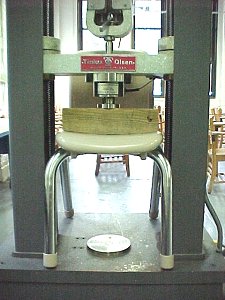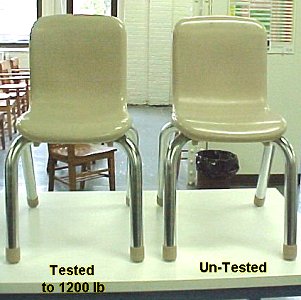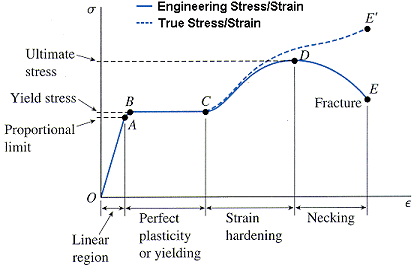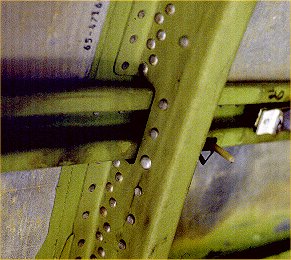Structure
any object that must support or transmit loads
Factor of safety, n
the ratio of actual strength to required strength
- generally values from 1 to 10 are used
- structure will presumably fail for n less than 1
n = (Actual strength) / (Required strength)
Photo by Jeff Thomas on March 23, 2002. Photo by Jeff Thomas on October 22, 2000.
Allowable stress
the stress that must not be exceeded anywhere in the structure to satisfy the factor of safety
Allowable stress = (Yield or ultimate strength) / n
Mechanical Engineering Design, 5th Ed., by J.E. Shigley and C.R. Michke, McGraw-Hill, 1989, p12.
Tension: 0.45 σy < σallow < 0.60 σy Shear: τallow = 0.40 σy Bending: 0.60 σy < σallow < 0.75 σy Bearing: σallow = 0.90 σy
Design Example - Hay Wagon
Load and Resistance Factor Design (LRFD)
an alternative design method commonly used by structural engineers
γDPD + γLPL < φPU
PD - dead load - loads associated with the weight of the structure
Design Example - Building Construction
γD - dead load factor - accounts for uncertainties with the dead load
PL - live load - loads the structure is designed to hold
γL - live load factor - accounts for uncertainties with the live load
φ - resistance factor - accounts for uncertainties with the structure
PU - ultimate load - load at which the structure ceases to be useful
Margin of safety
an alternative definition to "factor of safety"
- commonly used in the aircraft industry
- structure will presumably fail for margins of safety less than or equal to zero
- usually given as a percent
Margin of safety = (n - 1) x 100
source source








